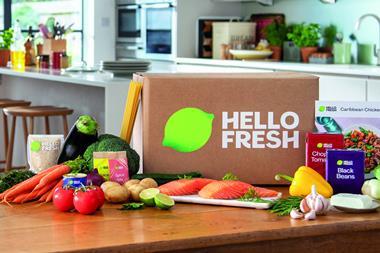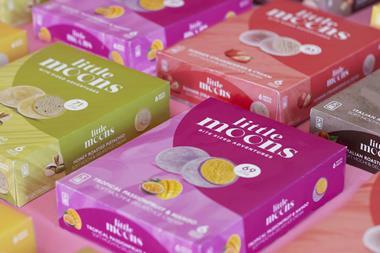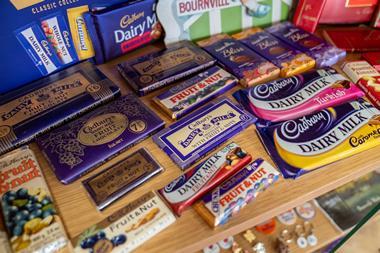Olive oil now accounts for almost the same share of the £155m market as standard at 46% and 49% respectively [Taylor Nelson Sofres].
Strong strategies backed by healthy marketing budgets from the three main protagonists Filippo Berio, Carapelli and Bertolli brands have brought this about, making olive oil the most vibrant sector of the oils market.
Filippo Berio claims to be holding up well in spite of the stiff competition snapping at its heels, which will soon include Napolina that has been finetuned by Princes Foods.
More than 38% of households use olive oil, says Filippo Berio's country manager Walter Zanré, which means more than 60% of them are not, and these consumers are the ones he intends to target with mild and light.
Zanré says: "Household penetration is up, the frequency of purchase is up, and the quantity consumers buy has increased.
"Extra virgin oil still accounts for the lion's share, but mild and light is showing growth and we see that variant as a key entry point for new users.
"We are trying to get the message across that it can be used in everyday cooking such as frying eggs, and that you can substitute margarine with mild and light," he adds.
Educating consumers about the health benefits of olive oil and its usage are going to be the main themes throughout 2002.
Filippo Berio will be doing it by placing 100,000 booklets into magazines, and encouraging consumers to trial via selective price cutting deals during the year.
Unilever Bestfoods is taking a two-pronged approach with heavy investment on both Bertolli oils and pasta sauces.
Category manager Mike Miller says last year's activity was aimed at making consumers aware of the brand with ads on both oils and pasta sauces. This year its more about educating the consumer about varieties and, as with Filippo Berio, the focus is on lighter oils.
Its Tradizionale and Robusto variants are the casualties from this new approach, both now discontinued.
Miller says: "Our extra virgin olive oil, Gentile and Delicato sold very well but Robusto was too strong for the British palate, and didn't.
"People also didn't understand or like the cloudy look of the unfiltered Tradizionale oil and could not appreciate its finer points."
TV ads have just finished and UB is now direct mailing two million homes with facts about its Gentile and Delicato light olive oil.
A one litre size bottle for its bestseller, extra virgin olive oil, has been introduced to tempt heavy users, and Miller doesn't rule out larger sizes for the Gentile and Delicato once they have established themselves in the 500ml which, he says, is the most popular size in the market by a long stretch.
And from July, UB is making available a special pack offering 500ml extra virgin olive oil with an oil drizzler.
Another method to maximise sales is cross merchandising with complementary lines. UB has combined a prepacked salad with a small pot of olive oil and a money off coupon.
Meanwhile, Carbonell has been promoting its Spanish olive oil and offering recipe books via prepacks of little gem lettuces in Sainsbury.
Carapelli was keeping its cards close to its chest but for the summer it has plans to team up with another Italian company for in-pack promotions.
Last year's unknown quantity was Napolina acquired by Princes Foods from UB in May 2001.
The brand, covering canned tomatoes, cooking sauces, pasta and olive oils, was recently relaunched, updating packaging and improving quality. Princes is now working on increasing distribution.
Marketing manager Sally Haydock says: "Napolina was a small brand when we took it on between 1% and 1.5% of the market and we would be happy enough to gain a few percentage points in the first year.
"We've simplified the look to make the packs easier to understand. The same products are available standard and extra virgin olive oil in 250ml, 500ml and one litre."
New are flavoured oils in 125ml bottles garlic, basil, sun-dried tomato, and lemon and dill aimed at new and light users, and these are currently available in Asda.
In spite of the noise surrounding the oil fixture, she says there is still more work to be done to increase penetration. "We have a tag on our products explaining the difference between the oils, all the health benefits, plus recipe ideas. We've also a series of press ads and on-pack activity to drive noise around the category."
Haydock says promotional activity may include more 50% extra free packs rather than bogofs. "We want consumers to buy more to use, not for it to sit in their cupboards for longer," she explains.
Olive oil is one of the more lucrative sectors in grocery where retailers' massive profit margins can be anything between 35% and 50%.
Asda and Tesco are the exceptions as, since January, they have cut the prices of own label ranges in a bid to stimulate demand. Asda's most recent price cut was last month, according to an industry source, who says both Asda and Tesco are prepared to compromise on margins to reduce prices. Some observers believe this type of strategy does not grow the market and it confuses the consumer.
Merchandising is another issue which causes confusion among consumers, says Princes' Haydock, and she praises retailers who have segmented the product into the types of olive oil to make it easier for time-poor consumers to pick the one they want.
However Stephen Barlow of Euro Food Brands, which distributes Carapelli, says the lack of space on shelf for the main products has become a major problem.
"Major players are spending money building the market and they are not getting the correct amount of space on shelf, because there are too many smaller products clogging the fixture."
In May Carapelli was acquired by bankers B&S Private Equity and Arca Impresa Gestioni from the Cereol Group, a move welcomed by Barlow who says the new owners are very supportive of the brand. He claims Carapelli is one of only two major brands that is 100% Italian, and this is clearly illustrated on the bottle.
Last year it successfully launched regional oils into the UK and these are listed in Asda, Tesco and Safeway.
But, highlighting the demand for larger bottles and containers, one of its star performers is a three-litre can of extra virgin olive oil, sold in some of the major multiples at £10.74.
"It was launched less than a year ago, but it has become an enormous part of our business, selling at least 2,000 cans a week," says Barlow.
The other 100% Italian brand is Loyd Grossman, handled by Premier International Foods. Loyd Grossman launched the extra virgin olive oil under his Authentics label last year.
Grossman says the olive oil fixture is still confusing because many of the brands look and sound Italian, but are in fact a blend from countries of non-specific Mediterranean origin. "It's a bit like buying a bottle of wine 10 years ago a wall of fancy labels using language that tells you little about the product or how to use it."
He claims the success of his brand demonstrates that it's one consumers trust, representing a good quality product with great flavour.
Standard cooking oil is still an important part of the oils market and, according to Unilever Bestfoods, seed oils are a significant part of the volume of the market. Three of its brands are in Taylor Nelson's top 10 Spry, Flora and Mazola, the only exception being Olivio. "Olivio has never been a top 10 oil but it is our fastest growing product," says category manager Jonathan Bedford.
He says that according to ACNielsen Homescan's gauging of value shares 52 w/e May 18 2002 Mazola was 1.3%, up 0.6%, Olivio 2.1%, up 0.6%, Flora 6.2%, and Crisp n Dry 12.6% the value of all four being 22.2%, up 0.1%.
Bedford claims that olive oil is the star of the oils market but, in spite of standard oil being a mature market, UB's brands are performing well.
{{FOCUS SPECIALS }}
Close menu
- Home
- Buying & Supplying
- Stores
- Channels
- Finance
- People
- Reports
- Events
- Jobs
- Subscribe now
Sign in to comment on this article
Not logged in before? Register for FREE guest access today.
You will be able to:
- Read more stories
- Receive daily newsletters
- Comment on stories
Advert









No comments yet